The Scottish Fold is thought to have its origins in China,
although the first recognized Scottish Fold was born in the 1960s in Scotland
and was named Susie. She was a white, shorthaired cat and it was one of her
kittens that was used in a breeding programme for Scottish Folds by Pat Turner
and William Ross.
The Scottish Fold breed of cat is characterized by its
folded ears, making it resemble a Short-eared Owl. This mutation of the ears is
a result of a dominant gene. The kittens are not born with folded ears, but
they begin to fold at about three weeks old. The breed is known for their excellent
hunting skills, and loved for their quiet, placid personality. They are also
known for sleeping on their backs! The Scottish Fold’s coat can be either
long-haired or short-haired and appears in most colours.
Origin
Named after its forward folding ears, the Scottish Fold cat
breed was first seen as a natural mutation in Scotland in the 1960s. British
cat show judges and numerous veterinary surgeons decided that the cat's folded
ears were an undesirable deformity and would make it impossible for the cat to
clean its ears. Deformities of the spine, hind legs and tail also appeared when
folded-ear cats were bred to one another. Therefore, the Governing Council of
the Cat Fancy in the UK decided against allowing the registration of the
Scottish Fold cat. The breed is popular in the USA and elsewhere.
Appearance
Scottish Folds have a look all of their own. They have a
round head, accentuated by their tightly folded ears. It has been described as
if the cat appears to be 'wearing a helmet'. Their whisker pads are prominent
and give the impression of a 'smiling' cat. Scottish Folds can be found in
almost every colour and combination of colours.
Personality
Scottish Folds are intelligent, sweet-tempered, soft-spoken,
and easily adaptable to new people and situations. They are very loyal and tend
to bond with one person in the household. While they will usually allow others
to cuddle and pet them, their primary attachment becomes quickly clear as they
single out their chosen humans. They thrive on attention, but it must be on
their own terms. Despite their devotion, they are not clingy, demanding cats
and usually prefer to be near you rather than on your lap. They enjoy a good
game of fetch now and then as well, and keep their playful side well into
adulthood. Despite the breeding and health difficulties, Folds have certainly
earned their standing in the cat fancy.
Coat
Scottish Folds can be either long- or short-haired, and they
may have nearly any coat color or combination of colours (including white).[3]
Short hair Scottish Folds have thick and soft fur, with long hair Folds having
longer and exceptionally dense fur around their upper thighs, toes, ears, and
tail.
Grooming
Groom a shorthaired Scottish Fold weekly to keep his coat
shiny and healthy. A Highland Fold should be combed twice a week to prevent or
remove mats and tangles. The only other grooming the Scottish Fold needs is
regular nail trimming, usually weekly, and ear cleaning only if the ears look
dirty. Use a gentle ear cleanser recommended by your veterinarian. Brush the
teeth frequently with a vet-approved pet toothpaste for good overall health and
fresh breath. Start nail trimming and teeth brushing early so your kitten
becomes accepting of this activity.
Health
This breed can suffer from health problems, especially due
to faulty breeding as crossing within the same breed can often causes
deformities. Folds that inherit the folded ear gene from both parents
(homozygous Folds) are much more likely to develop congenital osteodystrophy –
a genetic condition which causes the bones to distort and enlarge. Early
warning signs include a thickness or lack of mobility of the legs or tail.
Please Share..

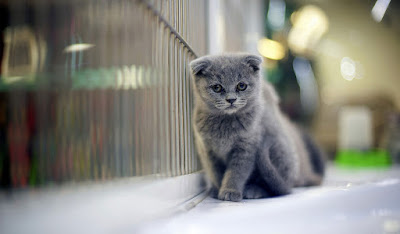
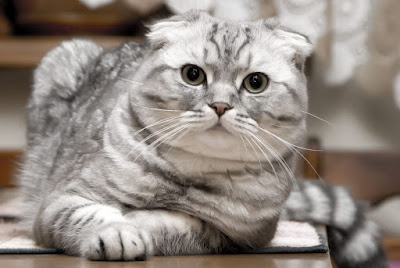
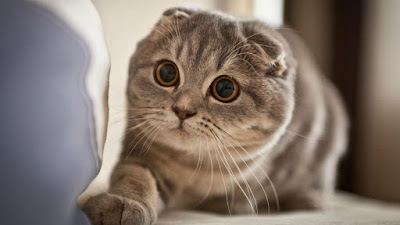

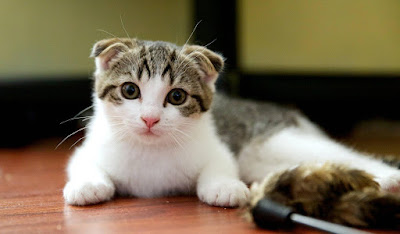
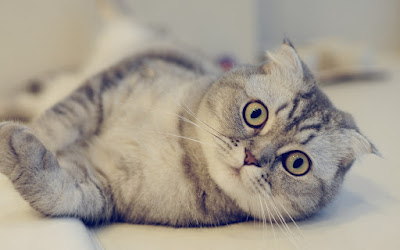













Nice Blog!!
ReplyDeletePlease have a look at:
Sphynx Cat for Sale
Spynx Cats for Adoption Near Me
Sphynx Kittens for Sale Near Me
Nice Blog!!
ReplyDeletePlease have a look at:
Sphynx Cat for Sale
Spynx Cats for Adoption Near Me
Sphynx Kittens for Sale Near Me